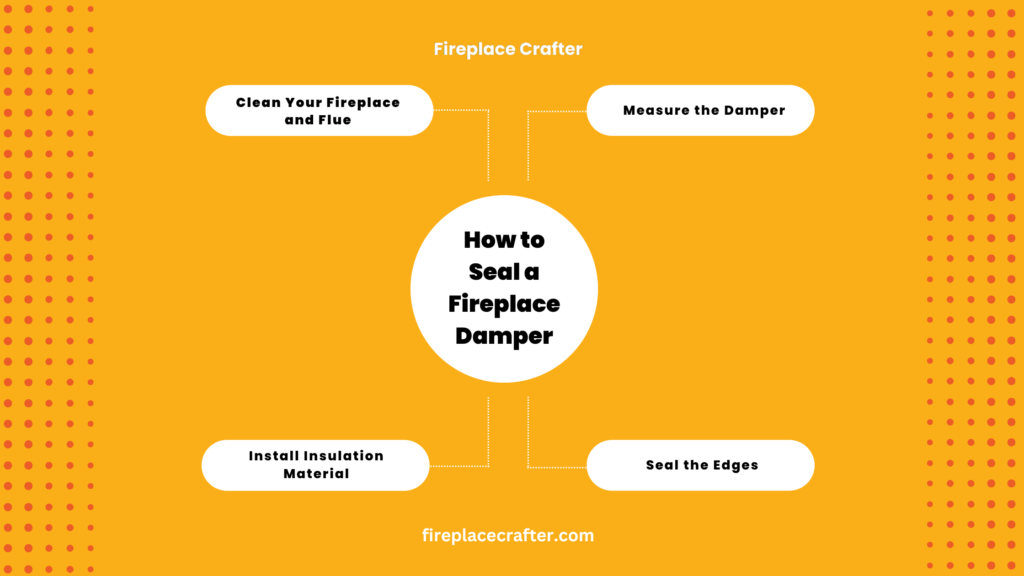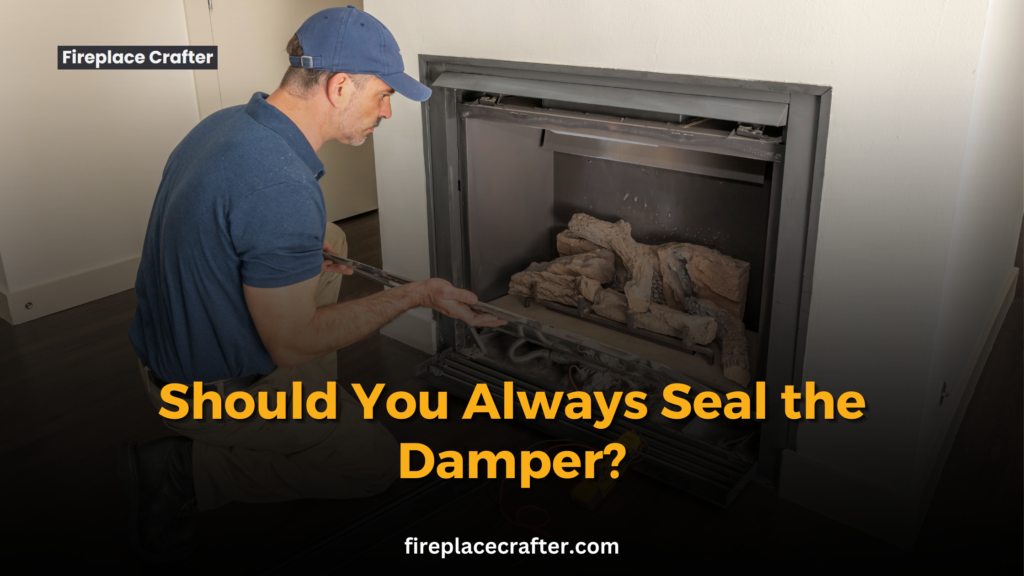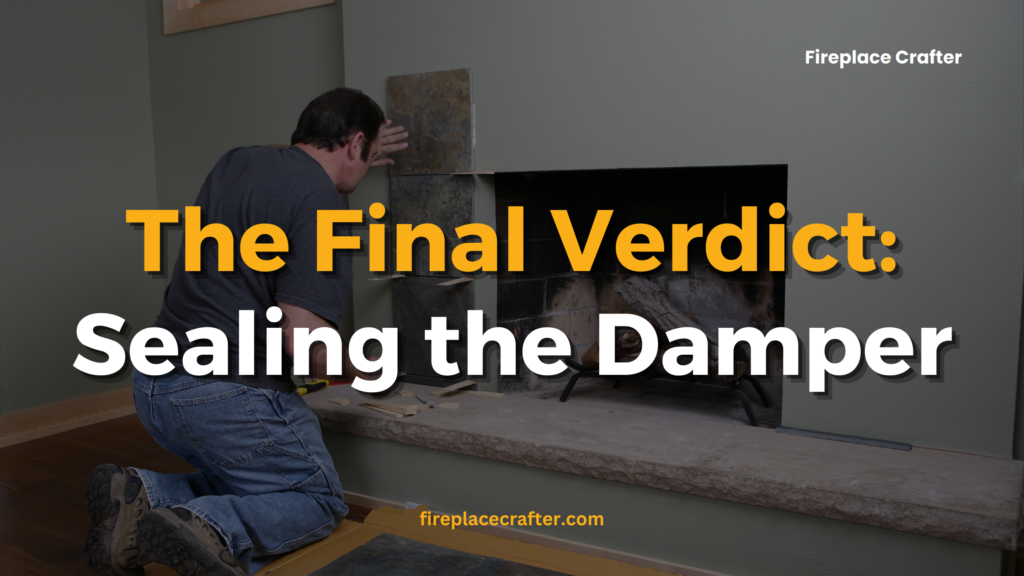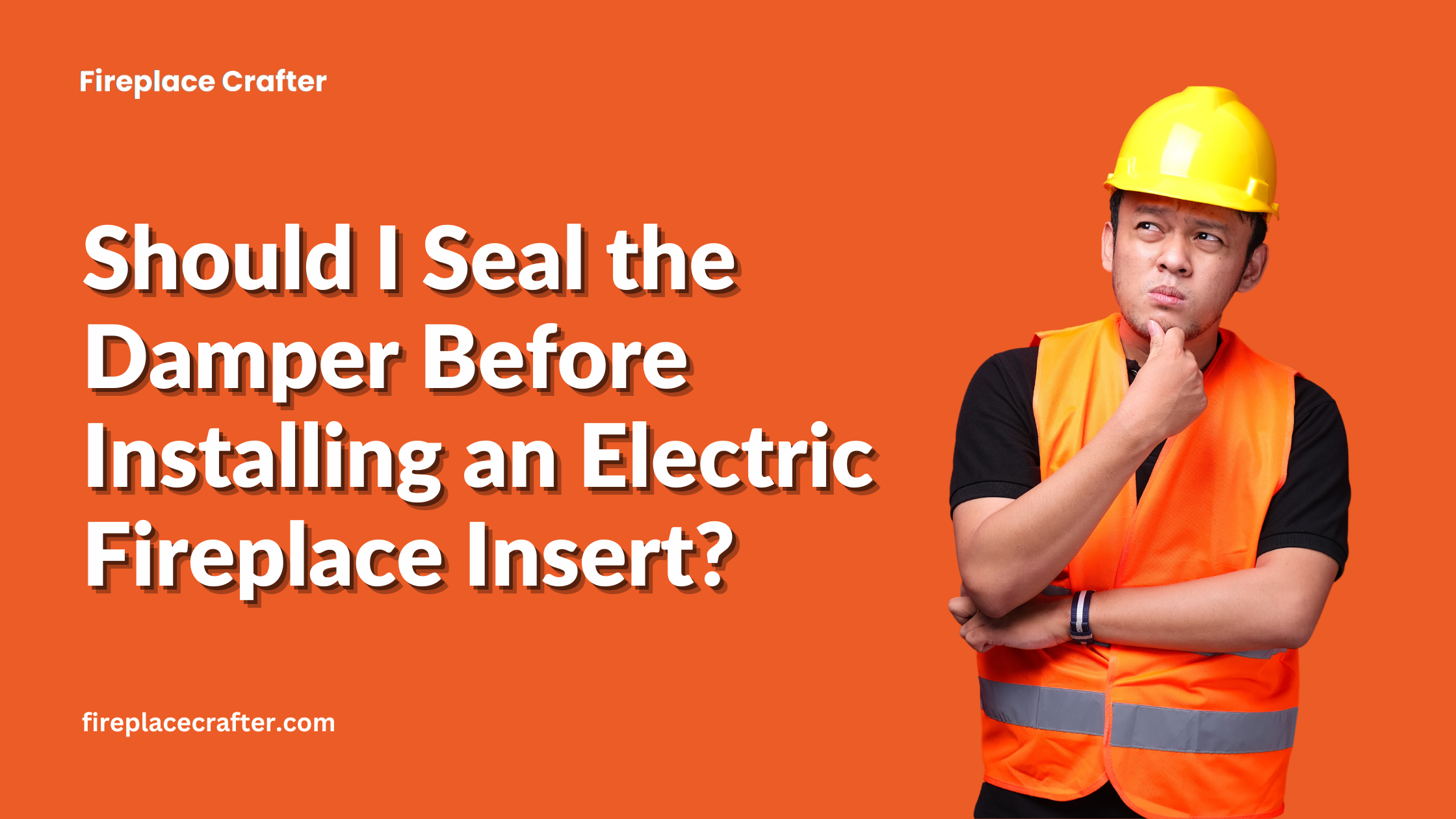Should I Seal the Damper Before Installing an Electric Fireplace Insert?
Yes, it would be beneficial to seal the damper before installing an electric fireplace insert. Since most electric fireplace inserts sold now don’t require ventilation, having an open or partially sealed damper could lead to drafts and heat loss.
Sealing the damper will help increase energy efficiency by preventing and avoiding losing heated or cooled air from your home. Always make sure to follow the manufacturer’s instructions and consider hiring a professional to ensure safe and proper installation.
Overview of Dampers and Fireplace Inserts
Before diving into the specifics, it’s crucial to understand what a damper is and how a fireplace insert functions.
The damper is a movable plate in the flue of a fireplace that regulates the draft. Open doors allow smoke and gases to escape; when closed, they conserve heat and prevent outside air from entering.
The Importance of Sealing the Damper
The damper is pivotal with traditional wood- or gas-burning fireplaces, as it directs smoke and gases safely out of your home. However, with an electric fireplace insert, the use and remote control of the damper become redundant because no smoke or gas is produced.
By sealing the damper, you can prevent outside air from coming in and the heated air from your home from escaping. This way, you can ensure energy efficiency and reduce unnecessary heat loss. Insulating and sealing the fireplace turns a significant energy leak into an efficient heating source.
How to Seal a Fireplace Damper
Sealing a fireplace damper can be straightforward, depending on your existing gas fireplace or electric unit’s condition and the damper system.

Step 1: Clean Your Fireplace and Flue
Before sealing the damper, the first step is to ensure your fireplace and flue are clean and debris-free. Ash, soot, and other residues can interfere with your sealing process. You can hire a professional chimney sweeper to ensure a thorough job.
However, you can also clean yourself if you feel confident and have the right tools. Ensure you wear protective gear, including a mask and gloves, for safety.
Step 2: Measure the Damper
The next step involves measuring the dimensions of your existing fireplace damper. Having accurate measurements will allow you to obtain the right insulation materials to fit the space properly.
Several options are available for insulation materials, such as chimney balloons that inflate to fit the size of your flue or rigid foam board insulation that can be cut and fitted to match the damper’s shape.
Step 3: Install Insulation Material
Once your insulation materials are ready, place them in the damper area. If you’re using a chimney balloon, inflate it until it snugly fits into the space. If you’re using rigid foam board insulation, cut it according to your earlier measurements and position it in the damper area.
Step 4: Seal the Edges
The final step is to use a high-temperature caulk or sealant to seal around the edges of your insulation. This is a crucial step to ensure minimal drafts and maximum energy efficiency. Apply the caulk or sealant around the insulation’s perimeter, covering all gaps.
Let the sealant dry completely before proceeding with the installation of your electric fireplace insert.
Should You Always Seal the Damper?
Homeowners want to ensure that their heating systems operate as efficiently as possible. The question of whether to seal the damper when installing an electric fireplace insert requires a careful analysis of the potential benefits and drawbacks.

Reasons to Seal the Damper
Let’s shed light on why to seal the damper and find its benefits.
Energy Efficiency:
With an electric fireplace insert, sealing the damper can significantly increase your home’s energy efficiency. It prevents the loss of warm air and keeps cold air from seeping in, helping to maintain a comfortable indoor temperature with less energy usage.
Cost Savings:
The energy efficiency achieved by sealing the damper can result in substantial savings on your heating bills over time. This is because less energy is wasted trying to maintain the desired temperature in your home.
Prevention of Drafts:
An unsealed damper can allow drafts into your home, particularly during windy or stormy weather. Sealing the damper helps to prevent these drafts, making your living space more comfortable.
Eco-friendly:
An electric fireplace insert does not produce the harmful emissions associated with wood or gas fireplaces. By installing an electric fireplace insert and sealing the damper, you’re effectively eliminating a source of energy waste, making your heating system more eco-friendly.
Reasons Not to Seal the Damper
While there are considerable benefits to sealing the damper, there may be circumstances where it is not the best course of action.
Flexibility:
If you intend to switch from an electric fireplace to a traditional wood or gas-burning fireplace at some point, sealing the existing fireplace opening with the damper may not be advisable. A removable insulation solution like a chimney balloon might be a better option.
Potential for Damage in High-Wind Areas:
Homes in high-wind or storm-prone areas may be at risk of damage to a permanently sealed damper. In these cases, a top-sealing damper might be a more suitable solution that can be opened and closed as needed.
Professional Assistance Required:
While sealing a damper or electric insert can be a DIY project, it might require professional assistance for some homeowners, especially if they are uncomfortable with the task. This might add an additional cost to the installation of your electric fireplace insert.
Whether or not to seal the damper largely depends on your specific circumstances, preferences, and future plans. By weighing the potential benefits and drawbacks, you can make a mature decision that best suits your needs and enhances the comfort and efficiency of your home’s heating system.
Are there any Alternatives?
If sealing your damper doesn’t seem like the right option for you, there are alternatives. Some homeowners opt for installing a top-sealing damper. It is installed at the top of the chimney and acts as a cap, preventing drafts from entering while ensuring no heated air escapes. This could be an option if you’re looking for flexibility in your fireplace usage.
The Final Verdict: Sealing the Damper
Deciding whether or not to seal the damper before installing an electric fireplace insert is a decision that should be taken seriously. It involves considering your unique circumstances, weighing the pros and cons, and often seeking professional advice.

Expert Opinions
Most experts in home heating systems suggest sealing the fireplace opening with the damper when installing an electric fireplace insert. This is primarily due to the substantial benefits associated with energy efficiency and cost savings.
As electric fireplace inserts do not produce smoke or gases, the need for an open damper to act as an electrical outlet or a ventilation route is eliminated.
HVAC professionals often recommend sealing the damper to prevent drafts and heat loss, particularly in regions with colder climates. The unanimous agreement among experts seems to be that if your plans include permanently switching to an electric fireplace insert, sealing the damper is the right thing to do.
However, experts also emphasize the importance of professional installation, especially when sealing the damper. Incorrect sealing can lead to drafts and potential damage, negating the benefits.
Therefore, if you need more confidence to perform this task yourself, it’s advisable to seek professional assistance.
Practical Considerations
For several reasons, sealing the gas fireplace, unit, and damper before installing an electric fireplace insert makes sense.
- First, it enhances the energy efficiency of your home, which in turn leads to cost savings on energy bills.
- Second, it prevents drafts from entering your living space, which can make a clear and significant difference in maintaining a comfortable temperature in your home.
However, there are also valid reasons why you might opt not to seal the damper. If you live in a storm-prone or high-wind area, the constant pressure on a permanently sealed damper could cause damage over time.
A permanently sealed damper might restrict your flexibility if you plan to alternate between an electric insert wood-burning fireplace and an electric and traditional fireplace.
Ultimately, the decision depends on your specific circumstances. Carefully consider your current and future needs, budget, and comfort with DIY projects.
Consider consulting with a professional to help guide your decision and ensure your fireplace insert installation goes smoothly.
Conclusion
Sealing a fireplace damper before installing an electric fireplace insert involves many considerations, such as your fireplace type, location, and future plans for the space. Experts generally agree that sealing the damper before installing an electric fireplace insert can enhance energy efficiency and reduce heating costs.
However, a top-sealing damper or removable insulation could be better if you plan to revert to a traditional fireplace or live in a weather-prone area. Whether you undertake the task yourself or hire professionals depends on your comfort level.
Sealing the damper ultimately depends on your specific needs and circumstances. Weighing the pros and cons and also seeking professional advice can help you make an informed decision.







